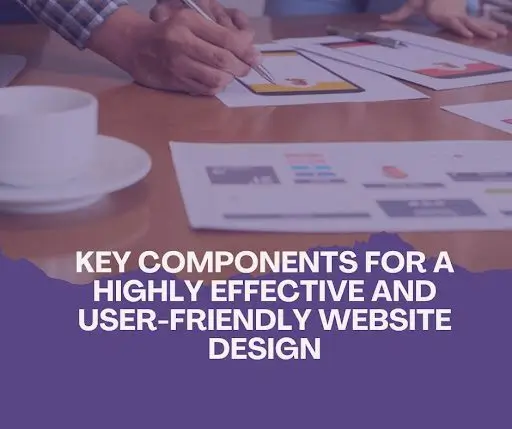The languages and skills used to create the user interface form the basis of front-end web development. Designers who possess these fundamental abilities can create websites that are both aesthetically pleasing and extremely functional. Because users access websites using such a wide range of devices, today’s dynamic digital environment places a premium on responsive web design and interactive features. The right front-end development technology must be chosen as a result. Whether you are a novice web developer or a seasoned front-end developer, this article will assist you in selecting the best technological stack for your specific knowledge and experience.
Front-end web developers are the architects of the digital world. They create the visual elements, interactive features, and responsive designs that users encounter on websites and web applications. These professionals possess a unique skill set that combines technical prowess with creative flair. In this article, we will explore the essential skills and knowledge areas that define a successful front-end developer.
Learning About the Primitive Developmental Resources

Front-end development requires a solid understanding of HTML, CSS, and JavaScript. Modern, feature-rich websites are constructed using these languages as their foundation.
Websites are built on the Hypertext Markup Language (HTML) standard, which defines how they should be organized and what content should be displayed. By defining elements like headings, paragraphs, images, and links, it lays the semantic framework for websites.
The look and behavior of a website are controlled by Cascading Style Sheets (CSS). By changing attributes like color, font, spacing, and responsiveness, designers can alter how HTML elements appear. Understanding CSS coding is essential if you want to create appealing and adaptable designs.
JavaScript is a scripting language that makes it possible to create interactive features and layouts, giving web pages a new lease on life. JavaScript allows for real-time communication with web servers, the generation of dynamic content, and the processing of user input without requiring a page reload.
Both junior and senior developers are essential to the front-end development process. They collaborate closely with full-stack developers and designers to create a consistent and user-friendly user interface (UI) for desktop and mobile platforms. It’s worth noting that user-friendly designs play a crucial role in front-end development. A well-designed UI can significantly impact the success of a website or application. The influence of user-friendly websites is for those seeking to enhance their knowledge of the importance of user-friendly designs. It provides valuable insights into the integration of user-friendly designs into the development process, resulting in exceptional user experiences. It highlights the critical role of user-friendly designs and their significance in achieving success.
Observation and evaluation of knowledge
Before diving into the confusing world of front-end development technologies, it’s crucial to assess your experience and knowledge. To create mobile-friendly, highly optimized websites, front-end developers must have a firm grasp of HTML, CSS, and JavaScript.
Analyze your level of familiarity with the web languages used in the front end of websites. You’re able to write Java, CSS, or HTML code. Understanding your strengths and weaknesses is crucial. The first step in determining which technology stack will best suit your needs is to take a sincere assessment of your own strengths and weaknesses.
Which CMSs (Content Management Systems) have you used before? Platform-specific requirements for sites created with WordPress, Drupal, and Joomla include things like template customization and plugin development. Any front-end developer who wants to work on CMS-based projects must become an expert in the field of content management systems. While CMSs are an essential aspect of web development, choosing the right one can be challenging. Check out Choosing Right CMS for your website if you’re considering building a website using a CMS
When designing the front end, what to consider

When choosing front-end technology, the following points should be taken into consideration:
Needs and Objectives of the Project:
Your project’s requirements and objectives should guide your choice of technology. CMSs and custom web applications might be technologically distinct from one another. Consider the cost of the supplies and equipment you’ll be using. Check to see if your project necessitates the creation of responsive websites. You should also think about whether image optimization is required and whether you have access to the resources and methods for effective image handling if you want to make sure that pages load quickly.
Consider how well your chosen front-end technology integrates with the other tools and frameworks you’ll be employing during development. Compatibility issues with backend systems, unit testing, or developer tools in your browser may have an impact on how effectively your workflow operates. Knowing how your chosen technology fits into the bigger picture is important because front-end and back-end engineers frequently collaborate to ensure smooth data exchange and integration.
Employment Opportunities and Market Demand
There is a constant need for front-end developers with advanced technical skills in a variety of languages and frameworks. To find out which technologies are in demand, it’s a good idea to keep up with the labor market. The potential for increased earnings and job opportunities can be achieved by acquiring marketable technical skills.
Information You Should Know About Common Front-End Tools

Let’s examine some of the front-end innovations that are currently most in demand:
- Angular, React, and Vue.js are a few examples of front-end frameworks and libraries that are frequently used in this field. These beneficial tools offer pre-built components, which streamline the process of creating dynamic features and responsive web designs. Due to their ability to speed up development and make code maintenance simpler, these frameworks are frequently used by front-end developers.
- Using package managers and build tools like Webpack and Gulp can increase the efficiency of front-end development. These tools improve productivity by streamlining and optimizing code. For front-end developers, understanding how to manage dependencies is a key skill, and package managers like npm make this process simpler. These tools are necessary for the operation of even the most complicated modern web development projects.
Have you explored essential front-end development strategies and skills? If you’re looking to enhance your knowledge further, I encourage you to read my blog post, “Front-End Development Strategies and Skills: The Essential Guide”. It provides valuable insights into the key skills every front-end developer should possess.
Understanding Your Skills and Objectives to Make Technology Decisions That Fit
Before making any technological choices, it is essential to match your skills and goals with the requirements of your project. You might want to research CSS preprocessors and postprocessors if you are proficient in CSS and if you want to advance your knowledge of aesthetic design. If this is crucial for your project, think about using a responsive web design framework like Foundation or Bootstrap.
You should also pay attention to the design of your project. You’ll be able to make wise design choices and develop user-friendly interfaces if you have a solid grasp of UI and UX design principles.
Always Developing and Learning New Things
Front-end development requires ongoing learning and skill development due to the field’s constant evolution. Both technical knowledge and soft skills, like the capacity for effective collaboration and communication, are crucial. It is simpler to stay current with trends and best practices in front-end development by networking with other developers.
For websites to function flawlessly and to be responsive, front-end web developers are essential. These specialists act as the link between design and development, ensuring the flawless implementation of complex user interfaces. In order to debug and correct source code errors and produce the highest-quality result possible, they make use of browser developer tools.
Conclusion
It’s essential for any programmer to select the best front-end development technology. Front-end programming languages and the basics of web development are the only way to create superior user experiences. The technology you use should be appropriate for your level of expertise, the project’s requirements, and your career objectives. Understanding market trends, conducting a thorough self-evaluation, and being committed to lifelong learning are all necessary for navigating the dynamic front-end development landscape successfully. A strong technology stack is critical to your success in the constantly evolving field of web development, whether you’re a junior developer just getting started or a senior front-end developer looking to expand your knowledge.







